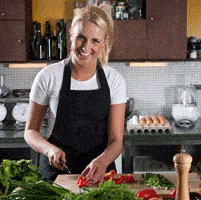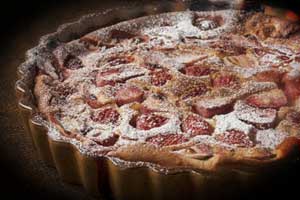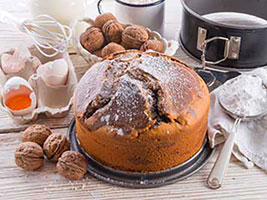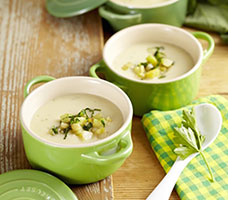
The first key lies in the lettering and understanding the distinction provides insight into the composition of Pyrex bakeware. Uppercase PYREX typically suggests the use of borosilicate glass. And lowercase ‘pyrex’ an indicator of heat-tempered soda-lime glass.
What's the difference between PYREX and pyrex?
It’s not only the capitalization that’s different, it’s also the way a product reacts to thermal expansion and thermal shock and what that means for pyrex. This is an explanation of thermal shock:
‘Thermal shock occurs when a rapid temperature change causes various parts of a material to expand at different rates. This ‘stresses’ the product which can cause the material to crack. In materials like glass, if the temperature change happens rapidly, the item can shatter or have an ‘explosive’ reaction.’
There are 2 questions here we need to answer: ‘When did the change from PYREX to pyrex occur?’ And if you’re a collector of PYREX, ‘How does lettering date Pyrex products?’
If you’re feeling confused, rest assured you’re not alone. Let’s dive into clarifying how the change unfolded.
When did PYREX change to pyrex?
PYREX refers to glassware that was originally created and launched in 1915, in France, by Corning Glass Works. Corning is now owned by Corelle Brands LLC. There were 12 products in the launch which included a loaf pan and pie plates.
The name Pyrex® is a registered trademark and brand name for the popular bakeware.
pyrex (lowercase) was a re-branding of the trademark Pyrex in the 1970’s. It’s a term often used to describe glassware that’s similar in style or composition to the original PYREX glassware.
It’s important to note the distinction between the original PYREX glassware, which was made from borosilicate glass, and newer pyrex products that are mainly made from heat-tempered soda-lime glass.
The biggest change in glass composition occurred in the 1990’s when Corning sold the Pyrex® brand to World Kitchen LLC (now known as Corelle brands) and the bakeware sold in the US was no longer made from borosilicate glass. However, there’s plenty of confusion around when materials used to produce Pyrex actually changed.
Our research revealed Corelle brands confirmed some Pyrex® products were made from heated-tempered soda-lime glass as far back as 1961. And so begins the confusion.
According to Herb Dann, a designer at Corning, Inc. from 1961 until the 1990s :
.. by the time World Kitchen acquired the license to produce Pyrex®, Corning had mostly switched to tempered soda lime glass for almost all of its tableware products. The exception … was the 13x9x2 pan, which he said Corning never manufactured with soda-lime glass. Corning’s Charleroi plant was a major producer of transparent Pyrex ovenware made from air-tempered soda-lime glass
Source: Paul Topichak interview with Herb Dann, 2014, Corning Museum of Glass
Dave Huber (2014) was a product liability specialist at Corning. In 2014 and in his oral history he noted:
.. even plants that used only soda-lime formulations were using a variety of batch recipes depending on the plant ….. Corning relied on a complex system of dots and dashes (known as manufacturing date codes) stamped on its products to identify what type of glass and when and where it was produced.
And from Pyrex® collector Dianne Williams. According to her research
.. over 150 different glass compositions have been used for Pyrex branded products since 1915, including different formulations of borosilicate, aluminosilicate, and heat- and air- tempered soda-lime glass.
In the 1940’s Corning also started producing opalware. It began as a range of durable, break-resistant, stackable, nonporous, white messware for the World War 11 military. And at the end of the war, 1945, opalware evolved into a colorful and very popular bakeware range for the modern kitchen. And it all started with a mixing bowl set. Opalware was made from a soda-lime formulation. Production of opalware ceased in 1987.
Heat tempered soda-lime glassware is resilient and suitable for the majority of uses in the kitchen. But there’s a difference in thermal resistance properties, (the extreme temperatures the product can withstand before shattering), compared to borosilicate glass. In practical terms, you need to be aware of this if you intend using bakeware in extreme temperatures.
The evolution of Pyrex: Why change to heat-tempered soda-lime?
Our research has shown that Pyrex made from heat-strengthened soda-lime glass requires less energy to produce, therefore it’s better for the environment. And it’s easier to recycle.
We also found out that during the manufacture of borosilicate glass, a small percentage of Boric oxide, 4%, is used. This may be toxic* for those working with the product (see addendum for scientific info) and it’s more difficult to dispose of safely.
Combine these factors with a cheaper product to produce and I think we’ve found some compelling answers to ‘why the change?’
- less energy to produce
- better for environment
- easier to recycle
- less toxic
- cheaper
Looking from our current perspective when we’re striving to meet strict air pollution regulations, reduce energy consumption and achieve max product safety during manufacturing it’s easy to see why the change in materials. However these may not have been the reasons in the 60’s.
From what we have learned it seems Corning was striving for innovation, and so the reasons they had for changing formulas decades ago were most likely different to those when looking through today’s lens.
Now let’s contrast the 3 types of glass to see how the change has impacted the products’ use.
Comparing 3 types of glass
Borosilicate glass containing boron trioxide, has exceptional resistance to high temperatures and thermal shock. This quality is particularly important in laboratory settings. EG when using test tubes and flasks, due to its low thermal expansion when subjected to temperature variations.
In terms of kitchen use, bakeware has the ability for to transition from oven to freezer seemlessly. The product maintains integrity without risk of shattering.
Soda-lime glass is commonly found in kitchens and used for regular drinkware, glasses and jars. (Crystal glass or lead glass is also used and has a higher density than soda-lime glass.)
Soda-glass is more susceptible to breaking and cracking when exposed to extreme temperature changes and is not strong like borosilicate glass. (Think about your regular kitchen glasses and how vulnerable they are to chipping and cracking.)
Tempered, or toughened, glass is soda-lime glass that has been heat-treated to make it more durable. The benefit of tempered glass is that it’s stronger, more shock resistant and a safer glass.
When glass is tempered it’s heat treated and then forceablely cooled to create surface compression. The glass solidifies quickly while the centre cools more slowly. As the centre cools, a tension is created between the core and exterior layer.
Tempered glass is stronger than soda-lime glass and is resilient so it withstands thermal shock. This is used in the manufacture of pyrex. However it’s not as strong as PYREX products that have been made using borosilicate.
pyrex (with a small p) is mostly used in kitchenware sold in the US, South America, Asia; and in Africa, Europe and the middle East PYREX® is still available.
To conclude
We’ve come to the conclusion we couldn’t be certain a product labelled as PYREX is vintage based on logo alone. Pyrex glassware and bakeware is very collectable and an antiques appraiser or niche expert would have the expertise to evaluate products from an investment perspective.
As far as basic, practical kitchen bakeware is concerned, PYREX and pyrex products excel.
A note on caring for pyrex
Generally, PYREX products should not be used in a microwave or dishes washed in a dishwasher; especially if the dishes are colored. The harshness of a dishwasher can damage or fade delicate colors which reduces the value of vintage PYREX.
On other pyrex bakeware, follow manufacturer instructions regarding suitability for dishwasher and microwave use.
Pyrex glass pie plates, measuring cups and baking dishes are evergreens in our kitchen and are as useful today as when first purchased.



